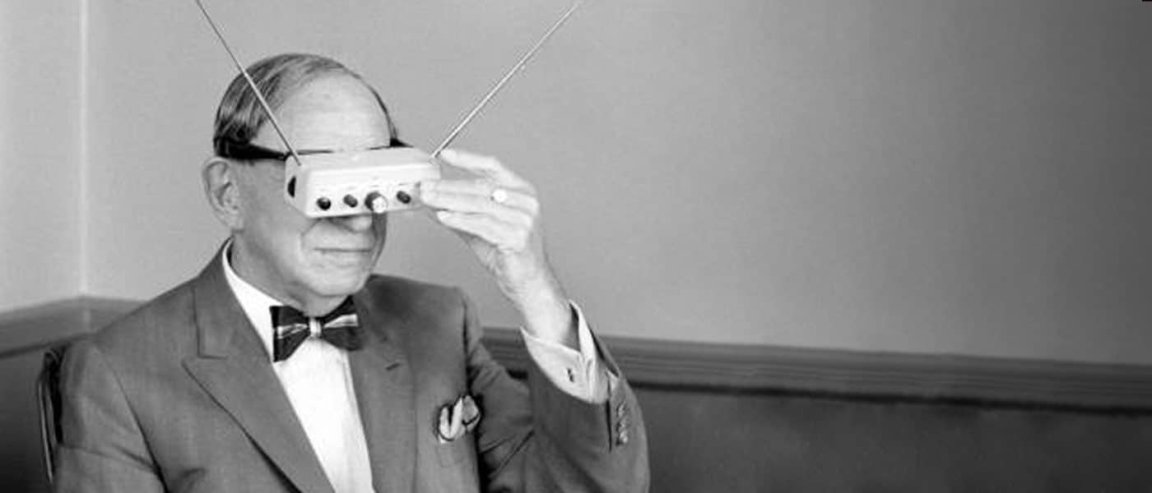
The Original VR
Currently, the desire for virtual reality (VR) is at an all-time high, driving the industry to innovate at a very fast pace. In addition to straightforward VR technology, we’re also seeing progress in augmented reality (AR) and merged reality (MR), an emerging hybrid where you can interact with digital objects using the physical objects around you, allowing you to hit a virtual ball with a real-life baseball bat, for example.

But when did we first start designing wearable screens that would transport us to another world? American author and inventor Hugo Gernsback is said to have created the first entertainment eyewear device — the closest predecessor to current VR goggles.
Gernsback is the same guy who created the brilliantly imaginative fiction magazine “Amazing Stories” in 1926, which later on was adapted into a TV series by Steven Spielberg. He is also responsible for coining the term “science fiction,” which he originally referred to as “scientifiction.” Because of this, the World Science Fiction Society’s annual award ceremony is referred to as the the Hugo Awards.
In 1936, Gernsback invented his television eyeglasses or “teleyeglasses,” a pocket-sized, battery-operated portable TV with a separate screen for each eye, much like today’s 3D VR glasses. The device provided an experience Life Magazine described as “neo-Martian.” At only about 140 grams (a little less than a third of a pound), the glasses came with small cathode-ray tubes inside of them, a pair of antennae protruding from their top (like those found on old TVs), and a promise from Gernsback that they posed no risk of electrocution…anymore.
Decades of Innovation
Of course, Gernsback’s invention isn’t exactly comparable to modern VR goggles — essentially, it was just a wearable mini TV — but for something conceived in the 1930s, it is pretty impressive. However, today’s VR/AR tech is much more impressive, and it seems like every day something new is happening to make it even more so.
In late 2016, the HTV Vive went wireless, untethering VR fans from their systems with one-and-a-half hours of battery life, and Oculus is currently working on a prototype of a VR headset that wouldn’t need to be connected to a console at all. Several companies are looking into ways to incorporate haptic technology into their systems, allowing users to not only see and hear virtual worlds, but feel them as well, and a few companies are even letting people smell and taste virtual reality.
Unlike Gernsback’s teleyeglasses, today’s VR systems are designed for far more than entertainment. They are being used to train medics, astronauts, and sailors, treat phobias, and even provide medical diagnoses. From the tech itself to its many uses, the world of virtual reality has truly come a long way in a relatively short amount of time.
